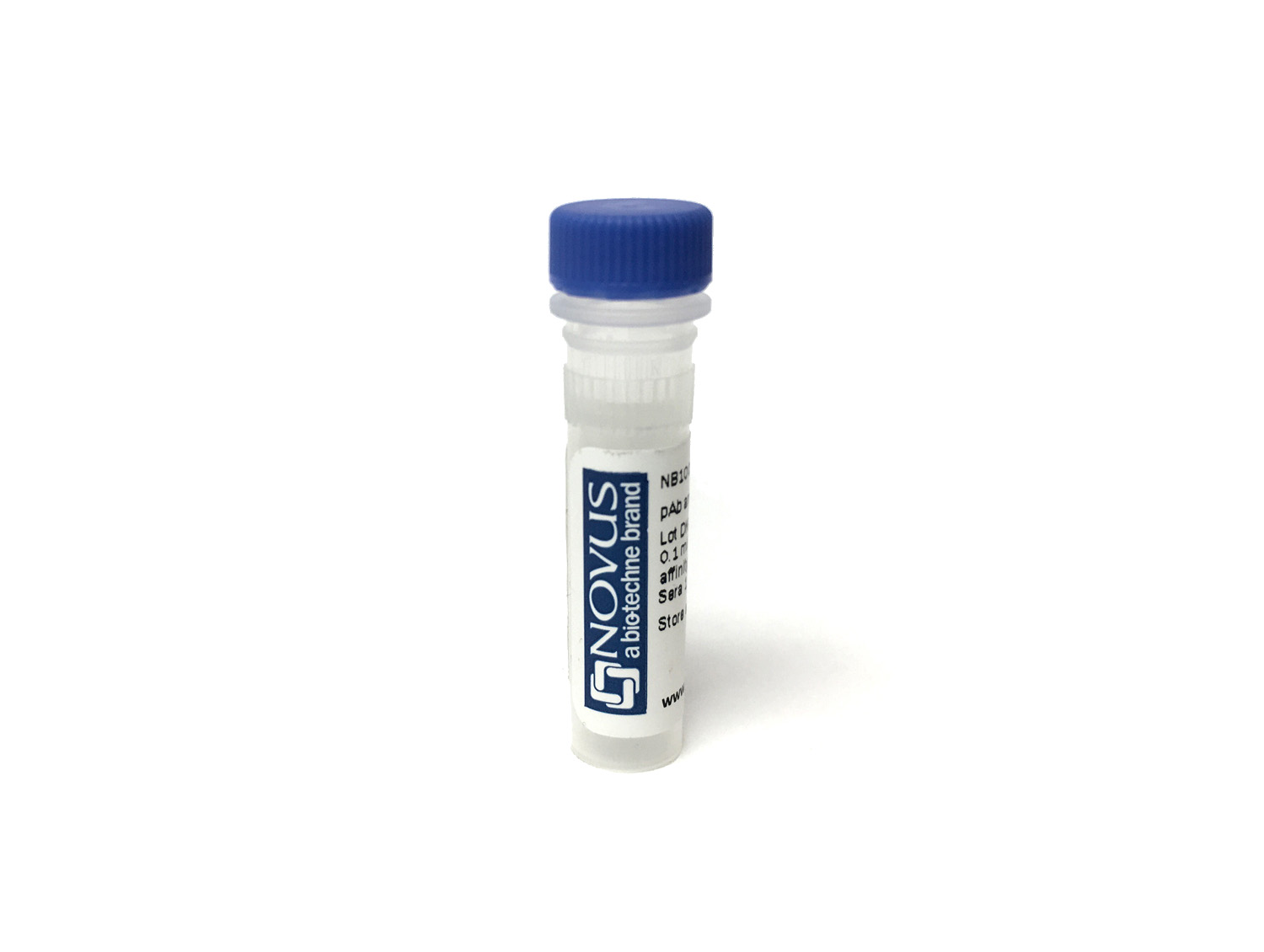NKp46/NCR1 Antibody (29A1.4) [Allophycocyanin/Cy7]
Novus Biologicals, part of Bio-Techne | Catalog # FAB22252APCCY7


Conjugate
Catalog #
Key Product Details
Species Reactivity
Validated:
Mouse
Applications
Flow Cytometry
Label
Allophycocyanin/Cy7 (Excitation = 650;755 nm, Emission = 767 nm)
Antibody Source
Monoclonal Rat IgG2A Clone # 29A1.4
Concentration
Please see the vial label for concentration. If unlisted please contact technical services.
Product Summary for NKp46/NCR1 Antibody (29A1.4) [Allophycocyanin/Cy7]
Immunogen
Murine myeloma cell line NSO-derived recombinant mouse NKp46-Fc chimera
Glu22-Asn255
Accession # Q8C567
Glu22-Asn255
Accession # Q8C567
Specificity
Detects mouse NKp46/NCR1 in direct ELISAs. In direct ELISAs, no cross-reactivity with recombinant
human (rh) NKp30, rhNKp44, rhNKp46, or rhNKp80 is observed.
Clonality
Monoclonal
Host
Rat
Isotype
IgG2A
Applications for NKp46/NCR1 Antibody (29A1.4) [Allophycocyanin/Cy7]
Application
Recommended Usage
Flow Cytometry
Optimal dilutions of this antibody should be experimentally determined.
Application Notes
Optimal dilution of this antibody should be experimentally determined. For optimal results using our Tandem dyes, please avoid prolonged exposure to light or extreme temperature fluctuations. These can lead to irreversible degradation or decoupling. When staining intracellular targets, specific attention to the fixation and permeabilization steps in your flow protocol may be required. Please contact our technical support team at technical@novusbio.com if you have any questions.
Please Note: Optimal dilutions of this antibody should be experimentally determined.
Formulation, Preparation, and Storage
Purification
Protein A or G purified from hybridoma culture supernatant
Formulation
PBS
Preservative
0.05% Sodium Azide
Concentration
Please see the vial label for concentration. If unlisted please contact technical services.
Shipping
The product is shipped with polar packs. Upon receipt, store it immediately at the temperature recommended below.
Stability & Storage
Store at 4C in the dark. Do not freeze.
Background: NKp46/NCR1
NKp46 plays a critical role in the NK-cell lysis of allogenic, autologous, and xenogeneic cells (3). Activation of NKp46 signaling is mediated via its association with immunoreceptor tyrosine-based activation motif (ITAM) bearing molecules CD3zeta and FcRgamma (3). Upon receptor-engagement NK-cell cytotoxic activity and cytokine release occurs (3). This NKp46 signaling can be blocked with anti-NKp46 monoclonal antibody mediated cross-linking which causes calcium release and interferon-gamma (IFN-gamma) and tumor necrosis factor-alpha (TNF-alpha) secretion (3). NKp46 recognizes multiple ligands presented on tumor cells or pathogens and infected cells including influenza virus hemagglutinin and the parainfluenza virus hemagglutinin neuraminidase (2). Additional ligands for the NKp46 receptor include heparan sulfate (HS) glycosaminoglycans (GAGs), hemagglutinin of human vaccina virus, and vimentin expressed on cells infected with Mycobacterium tuberculosis (3).
NKp46 and its NCR counterparts have shown to be successful targets for cancer immunotherapy. More specifically, human and mouse NKp46 has shown promise in virotherapy due to its ability to stimulate NK cell activation by binding to reovirus sigma1 protein in a sialic acid-dependent manner (3). Another approach for NKp46 in cancer immunotherapy is through the use of NCR based chimeric antigen receptors (CARs). In this therapy, NCR1 supplied human T cells with anti-tumor properties via cytokine secretion, upregulation of activation markers, improved expansion, and cytotoxicity in both mouse and in vitro models (3).
References
1. Barrow, A. D., Martin, C. J., & Colonna, M. (2019). The Natural Cytotoxicity Receptors in Health and Disease. Frontiers in immunology, 10, 909. https://doi.org/10.3389/fimmu.2019.00909
2. Mandelboim, O., & Porgador, A. (2001). NKp46. The international journal of biochemistry & cell biology, 33(12), 1147-1150. https://doi.org/10.1016/S1357-2725(01)00078-4
3. Barrow, A. D., Martin, C. J., & Colonna, M. (2019). The Natural Cytotoxicity Receptors in Health and Disease. Frontiers in immunology, 10, 909. https://doi.org/10.3389/fimmu.2019.00909
Alternate Names
CD335, Ly94, MAR-1, NCR1
Gene Symbol
NCR1
Additional NKp46/NCR1 Products
Product Documents for NKp46/NCR1 Antibody (29A1.4) [Allophycocyanin/Cy7]
Product Specific Notices for NKp46/NCR1 Antibody (29A1.4) [Allophycocyanin/Cy7]
This product is for research use only and is not approved for use in humans or in clinical diagnosis. Primary Antibodies are guaranteed for 1 year from date of receipt.
